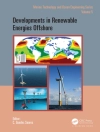Bridges the knowledge gap between engineering and economics in a complex and evolving deregulated electricity industry, enabling readers to understand, operate, plan and design a modern power system
With an accessible and progressive style written in straight-forward language, this book covers everything an engineer or economist needs to know to understand, operate within, plan and design an effective liberalized electricity industry, thus serving as both a useful teaching text and a valuable reference. The book focuses on principles and theory which are independent of any one market design. It outlines where the theory is not implemented in practice, perhaps due to other over-riding concerns. The book covers the basic modelling of electricity markets, including the impact of uncertainty (an integral part of generation investment decisions and transmission cost-benefit analysis). It draws out the parallels to the Nordpool market (an important point of reference for Europe). Written from the perspective of the policy-maker, the first part provides the introductory background knowledge required. This includes an understanding of basic economics concepts such as supply and demand, monopoly, market power and marginal cost. The second part of the book asks how a set of generation, load, and transmission resources should be efficiently operated, and the third part focuses on the generation investment decision. Part 4 addresses the question of the management of risk and Part 5 discusses the question of market power. Any power system must be operated at all times in a manner which can accommodate the next potential contingency. This demands responses by generators and loads on a very short timeframe. Part 6 of the book addresses the question of dispatch in the very short run, introducing the distinction between preventive and corrective actions and why preventive actions are sometimes required. The seventh part deals with pricing issues that arise under a regionally-priced market, such as the Australian NEM. This section introduces the notion of regions and interconnectors and how to formulate constraints for the correct pricing outcomes (the issue of ‘constraint orientation’). Part 8 addresses the fundamental and difficult issue of efficient transmission investment, and finally Part 9 covers issues that arise in the retail market.
* Bridges the gap between engineering and economics in electricity, covering both the economics and engineering knowledge needed to accurately understand, plan and develop the electricity market
* Comprehensive coverage of all the key topics in the economics of electricity markets
* Covers the latest research and policy issues as well as description of the fundamental concepts and principles that can be applied across all markets globally
* Numerous worked examples and end-of-chapter problems
* Companion website holding solutions to problems set out in the book, also the relevant simulation (GAMS) codes
عن المؤلف
Dr Biggar is Australia’s leading expert on the
economics of wholesale electricity markets and the economics of
public utility regulation. Since 2002 he has provided economic
advice primarily to the Australian Energy Regulator and the
Australian Competition and Consumer Commission. He has also
provided advice to other government agencies including the
Australian Energy Markets Operator, the Australian Energy Markets
Commission, and the New Zealand Electricity Authority. He has
published a number of papers in academic journals in the economics
of electricity markets and the economics of public utility
regulation and regularly provides training courses in these areas
to government agencies and industry. He has a particular interest
in the assessment of market power in wholesale electricity markets
and in matters related to wholesale market design.
Dr Hesamzadeh is assistant professor in electric power
systems division of the school of electrical engineering at KTH
Royal Institute of Technology in Stockholm, Sweden. Dr Hesamzadeh
is a world leader in the modelling of market power in wholesale
electricity markets, particularly in the context of transmission
planning. His special fields of interests include Power Systems
Planning and Design, Economics of Wholesale Electricity Markets,
and Mathematical Modelling and Computing. Hesamzadeh is currently
working towards his Docent degree in Electricity Markets at KTH.












